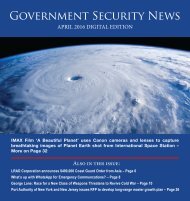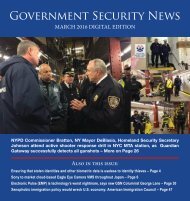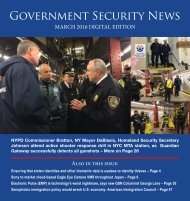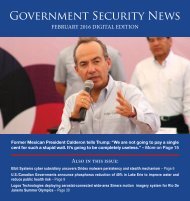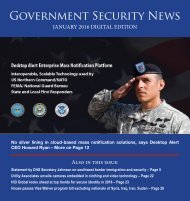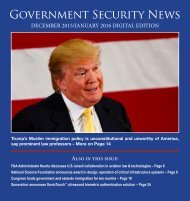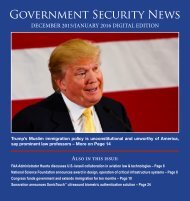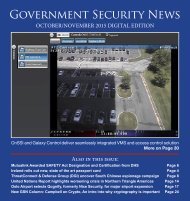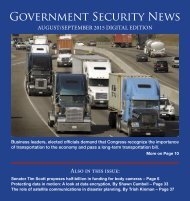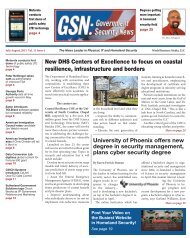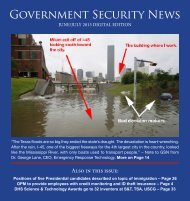GSN March 2016 Digital Edition
You also want an ePaper? Increase the reach of your titles
YUMPU automatically turns print PDFs into web optimized ePapers that Google loves.
Border Security/Immigration<br />
What’s next in the Supreme Court Case<br />
on expanded DACA and DAPA?<br />
By Mellissa Crow<br />
20, <strong>2016</strong> – This week, the<br />
Supreme Court announced it would<br />
<br />
Texas. The highest court will now<br />
<br />
deferred action initiatives announced<br />
in November 2014,<br />
known as expanded DACA and<br />
cise<br />
of executive discretion. The<br />
Supreme Court’s decision could<br />
clear the way for the initiatives<br />
to go forward as early as June of<br />
<strong>2016</strong>. If that happens, expanded<br />
vide<br />
temporary relief from deportation<br />
to as many as five million<br />
people. It’s important to note that<br />
the current, active DACA program<br />
that began in 2012, which now has<br />
more than half a million people enrolled,<br />
is not being challenged in<br />
this lawsuit.<br />
Some court watchers were surprised<br />
to see the court direct both<br />
dent’s<br />
actions violated the “Take<br />
Care” Clause of the Constitution,<br />
<br />
“take Care that the Laws be faithfully<br />
executed.” Neither the Texas district<br />
court nor the Fifth Circuit Court of<br />
Appeals addressed this legal claim;<br />
instead, the lower courts based their<br />
decisions on the government’s alleged<br />
failure to comply with certain<br />
technical requirements under<br />
<br />
The Court’s request for additional<br />
briefing on this issue suggests that it<br />
wants to resolve all the issues in the<br />
case, rather than leaving a loophole<br />
that could be the basis for a future<br />
decision by the district court, which<br />
could further delay the implementa-<br />
<br />
However, the Court may not end<br />
up reaching the merits of this case<br />
at all and may instead dismiss the<br />
44<br />
case for lack of standing, or legal capacity<br />
to bring the case. This is the<br />
best case scenario. Texas and the 25<br />
other plaintiff states are arguing that<br />
they have standing because additional<br />
costs Texas might incur to issue<br />
drivers’ licenses to beneficiaries<br />
of the deferred action programs<br />
give them enough of a stake in<br />
the case to challenge federal immigration<br />
policy. If the Court<br />
<br />
would mean that states have an<br />
unprecedented role in an area<br />
that has always been an exclusively<br />
federal domain.<br />
Oral arguments in the case<br />
will likely be scheduled for April<br />
<strong>2016</strong>. The Court will issue a decision<br />
before its current term ends in<br />
June <strong>2016</strong>. For the sake of the immigrant<br />
families whose lives are riding<br />
on this decision, let’s hope that the<br />
<br />
<br />
him dating back to Eisenhower, has<br />
the authority to take executive action<br />
on immigration.<br />
Photo Courtesy of Photo Phiend.



